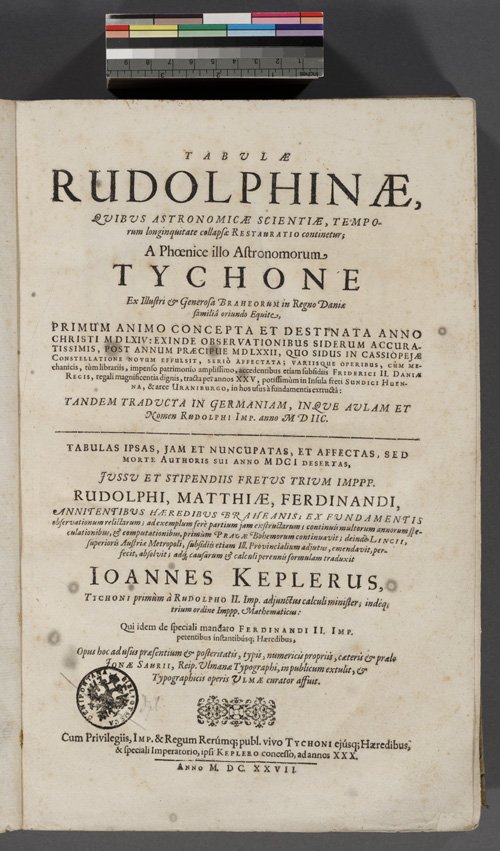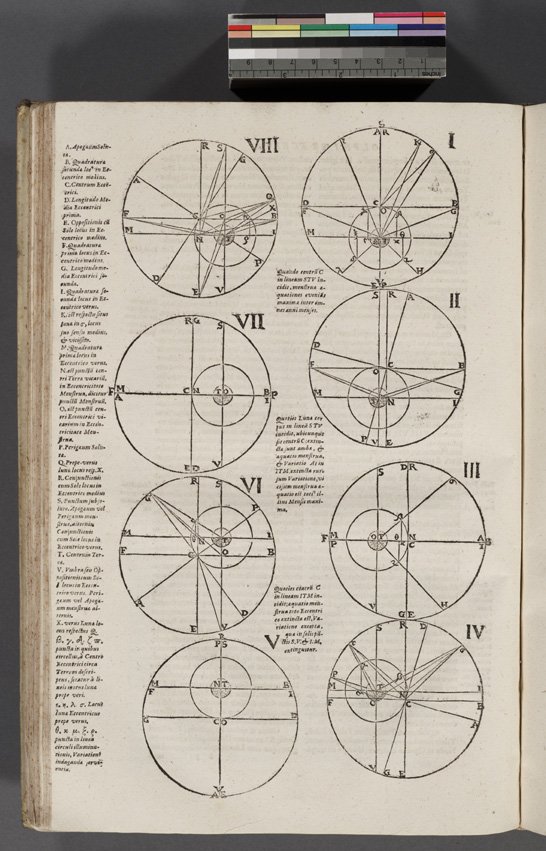- About MAA
- Membership
- MAA Publications
- Periodicals
- Blogs
- MAA Book Series
- MAA Press (an imprint of the AMS)
- MAA Notes
- MAA Reviews
- Mathematical Communication
- Information for Libraries
- Author Resources
- Advertise with MAA
- Meetings
- Competitions
- Programs
- Communities
- MAA Sections
- SIGMAA
- MAA Connect
- Students
- MAA Awards
- Awards Booklets
- Writing Awards
- Teaching Awards
- Service Awards
- Research Awards
- Lecture Awards
- Putnam Competition Individual and Team Winners
- D. E. Shaw Group AMC 8 Awards & Certificates
- Maryam Mirzakhani AMC 10 A Awards & Certificates
- Two Sigma AMC 10 B Awards & Certificates
- Jane Street AMC 12 A Awards & Certificates
- Akamai AMC 12 B Awards & Certificates
- High School Teachers
- News
You are here
Mathematical Treasures - Johann Kepler's Rudolphine Tables

Frontispiece for Kepler's Rudolphine Tables. The image, a monument for astronomy, pays homage to the great astronomers of the past: Hipparchus, Ptolemy, Copernicus and Tycho Brahe. Copernicus and Brahe appear to be debating an issue while Hipparchus ponders and Ptolemy computes.

This is the title page of Johannes Kepler's Rudolphine Tables (1627), the most accurate and comprehensive star catalogue and planetary tables published up until that time. It contained the positions of over 1000 stars and directions for locating the planets within our solar system. Kepler finished the work in 1623 and dedicated it to his patron, the Emperor Rudolf II, but actually published it in 1627. It is the first scientific work which extensively employs a new concept of logarithms. The table's findings support Kepler's laws and the theory of a heliocentric astronomy.

Page 78 of the Tables discusses the computation of planetary orbits.
For additional images from this work, see also Mathematical Treasure: Kepler's Rudolphine Tables and defense of Brahe.
Frank J. Swetz and Victor J. Katz, "Mathematical Treasures - Johann Kepler's Rudolphine Tables," Convergence (January 2011)




